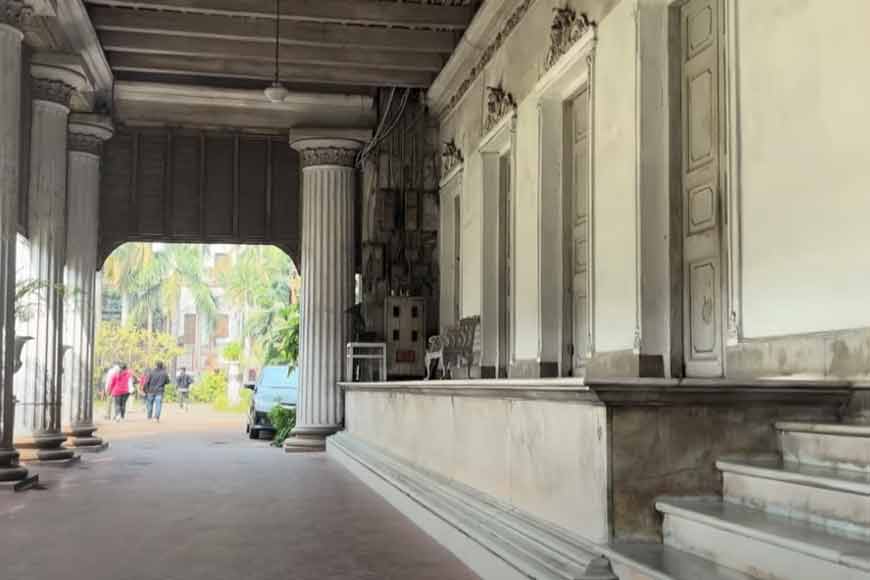The Marble Palace in Kolkata speaks of the grandeur of the Mullicks – GetBengal story
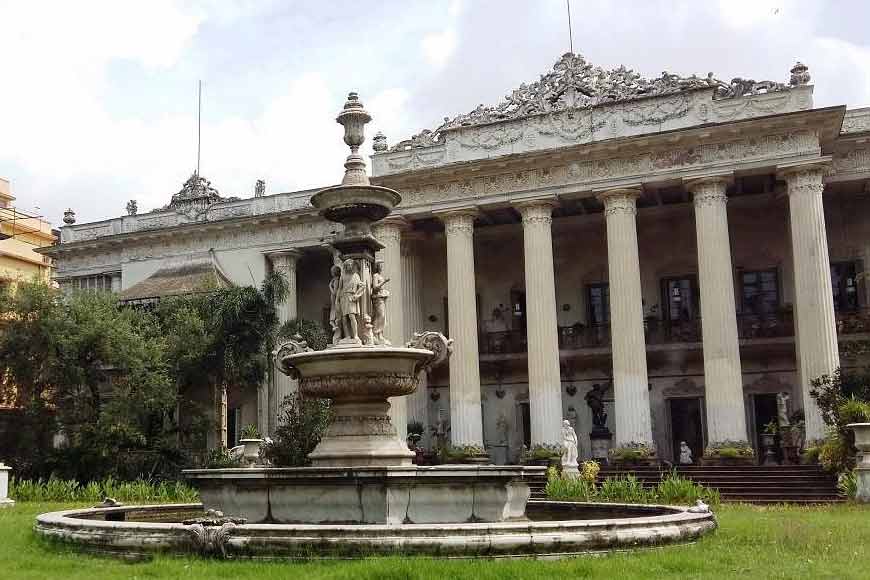
TWhen a palace turns into a wonderful museum, harbouring in its depths the royal vignettes of a bygone era, it turns into a treasure trove of marbles, mirrors and exclusive statues. Among the tales of ruins that most palaces of Kolkata have turned to, one palatial mansion still stands tall in all its grandeur, preserving the best of architecture and maintained by the erstwhile Mullick family. The family was as famous as the Tagores of Jorasanko and Pathuriaghata. But unlike most Bonedi families of Bengal, the Mullicks were not zamindars, rather they were a business family and well-known gold merchants.
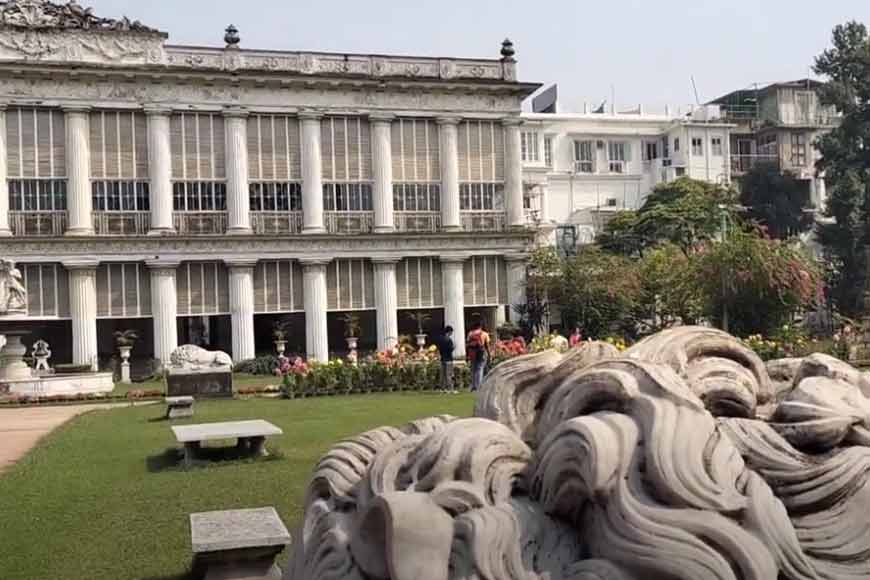
The Marble Palace was built by Rajendra Mullick, who was raised by his mother Hiranmayee Dashi and his English guardian Sir James Weir Hogg as his father died when he was just three years old. Getting the best of both Western and Eastern education Rajendra Mullick went on to become one of the famous citizens of British India. He was quite popular among the British and hence received the title of Rai Bahadur and later ‘Raja’ from Lord Lytton in 1878 for his commendable philanthropic deeds. He was even gifted a large diamond ring by the British as a ceremonial present. The Palace that Rajendra Mullick built was a piece of exquisite art by itself made of 90 varieties of patterned imported marble tiles on the floor, wall panels and tables and hence got the name of Marble Palace.
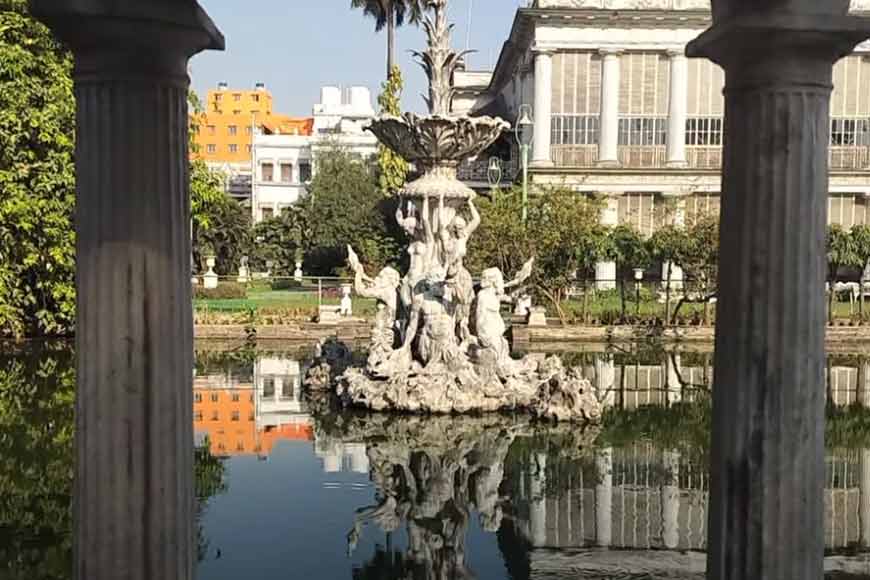
What is surprising is that Rajendra Mullick was only 16 years old when he built this mansion. Later many other mansions were built by the Mullick family all along North Kolkata including the Clock House in Chitpur. Resembling London’s Burlington House, this European styled mansion was built by 500 artisans brought from different parts of India and the world. Today, the palace stands in one of the lanes of busy Muktaram Babu Street and a closer look reveals even today, guards stand at the ornate gates with spears. The enormous white façade of the building has a long driveway encircling an elaborate fountain, statues of lions and those of Lord Buddha, Jesus and various Hindu Gods. The blue and white painted courtyard is filled with Greek and Roman statues.
The exterior of the Marble Palace has elaborate Rococo stucco work, a portico with six Tuscan columns, 14 Corinthian columns in the ground floor, and 14 more on the first floor, separated by Venetian shutters. The house is topped with an ornately carved French pediment. The huge compound has two buildings --- one that can be seen from Muktaram Babu Street which has now been turned into a museum housing priceless artefacts and the other behind where the living quarters were housed. Here is also a temple where the family deity of Lord Jagannath resides.
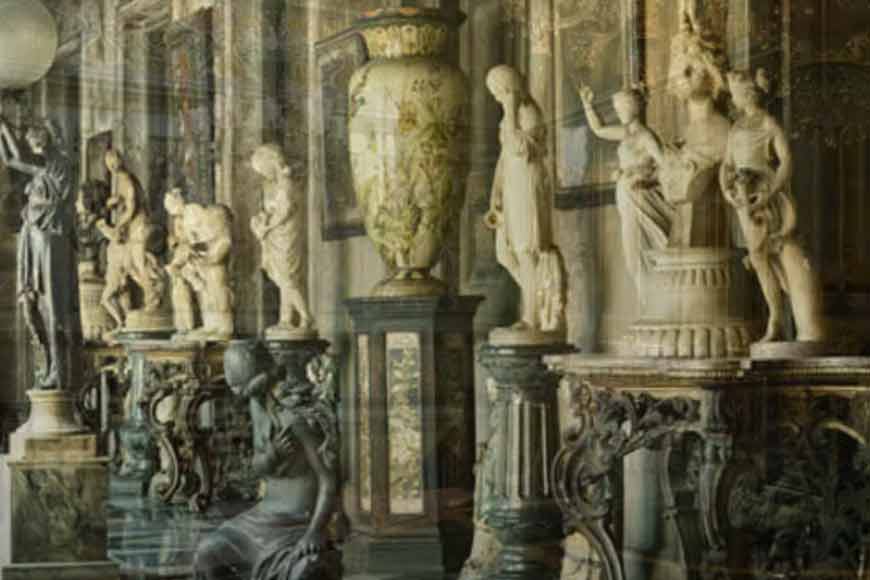
A unique feature of Marble Palace are the lush gardens built in Baroque style with ornamental seats below the palms and tropical plants providing shades. The garden once housed a menagerie of animals and birds and is considered to be the first zoo of the city. The first room in the ground floor is the billiards room with statues and enormously carved side tables. Rajendra Mullick amassed huge wealth and with that he bought an enviable collection of arts and artefacts including Sevres vases, Bohemian goblets, Dresden figurines, French Ormulo clocks and swords from Toledo. Enormous glass chandeliers can still be viewed with Venetian mirrors reflecting their grandeur. Marble Palace still has some of the world's most precious paintings. The huge collection of oil paintings include Rubens’ The Marriage of St Catherine and ‘The Infant Hercules Strangling the Serpent’ by Joshua Reynolds. The ballroom of the Mullick household entertained India’s top dancers and almost all governors of India. At one such performance in 1858, a thousand and one candles glowed in the Venetian chandeliers.
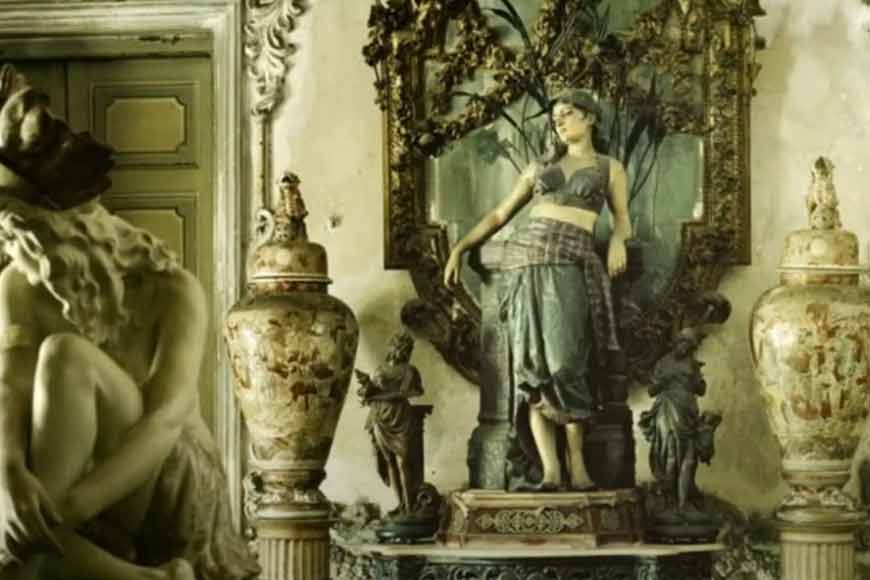
The second building stands parallel to the first and the ground floor has a kitchen, a dining hall, servant’s room and storage rooms. This is where the family members resided along with the shrine where they prayed. The Mullicks were known for their philanthropy and even today from their Trust Fund, 300 people are fed per day. Thankfully, unlike many other Old Houses and Palaces of Kolkata, the Marble Palace still shines in all its grandeur.
